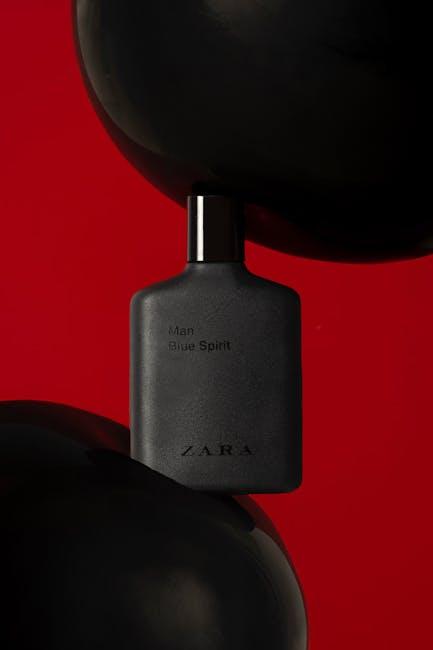In the ever-evolving world of fashion,where trends flicker in and out of existence like the gleam of a runway spotlight,brands constantly grapple with the challenge of staying relevant. Among these players, ZARA has carved out a reputation as a fast-fashion juggernaut, celebrated for its ability to bring the latest runway looks to the high street at breakneck speed. Yet, as luxury labels like balenciaga continue to push the boundaries of creativity and innovation, one must ask: can ZARA maintain its status as a trendsetter in a landscape that favors bold experimentation over accessibility? This article delves into the dynamics of the fast-fashion vs. luxury debate, exploring whether ZARA can keep pace with the avant-garde brilliance of Balenciaga while navigating the shifting tides of consumer expectations and sustainability. Join us as we unravel the complexities of fashion’s two worlds and examine what the future might hold for one of retail’s most iconic brands amidst an ever-changing cultural milieu.
ZARA’s Adaptive Strategy in Fast Fashion Dynamics
ZARA’s success lies in its ability to swiftly respond to the ever-changing landscape of fast fashion. By leveraging a elegant supply chain and a keen sense of market trends, the brand has mastered the art of producing and distributing new styles in record time. Unlike luxury labels such as Balenciaga, which frequently enough operate on a more customary timeline and focus on artistic uniqueness, ZARA embraces a rapid cycle of design and production that allows them to launch new collections in mere weeks. This agility is facilitated through:
- Data-Driven Decisions: ZARA employs advanced analytics to capture consumer preferences and buying habits.
- vertical integration: By controlling each stage of the supply chain, from design to retail, they minimize delays and maximize responsiveness.
- Limited Production: by producing smaller quantities of each item, ZARA creates a sense of urgency among customers, driving quicker sales.
Moreover, ZARA continuously refines its strategy to remain competitive, looking for innovative ways to engage with its audience. While Balenciaga often incorporates high fashion elements, ZARA targets a broader demographic by offering trendy designs at accessible prices. To enhance its customer experience, ZARA invests in:
| Customer Engagement | Implementation |
| Social Media Campaigns | Utilizing influencers to promote new collections. |
| Sustainable Practices | launching eco-friendly lines to appeal to conscious consumers. |
| Personalized Shopping Experience | Incorporating AI to tailor recommendations for customers. |

Balenciaga’s Influence on Trend Forecasting and Consumer Expectations
Balenciaga’s audacious designs and concept-driven collections have not only redefined haute couture but have also created ripples across trend forecasting and consumer expectations. By boldly embracing unconventional silhouettes, exaggerated proportions, and provocative themes, Balenciaga has set a new benchmark for what luxury fashion can be. As a result,consumers have grown accustomed to challenging the status quo,creating a desire for pieces that make bold statements rather than merely conforming to traditional aesthetics. This shift prompts trend forecasters to consider how avant-garde concepts can permeate mainstream fashion, fostering an unprecedented demand for originality among everyday consumers.
The impact of Balenciaga’s innovations trickles down to brands like ZARA, where the fast-fashion giant faces the challenge of keeping pace with the swiftly evolving landscape of consumer preferences. With a focus on speed and accessibility, ZARA must navigate the delicate balance between on-trend items and sustainability while infusing artistry into its collections. To stay relevant, ZARA can draw from Balenciaga’s playbook by:
- Prioritizing unique collaborations: Merging art and fashion to evoke excitement.
- Embracing diversity: Offering varied styles that cater to eclectic tastes.
- Inventive marketing strategies: Creating immersive campaigns that captivate target audiences.
By adopting these approaches, ZARA can not only meet but exceed consumer expectations, ensuring its place in a market increasingly influenced by the likes of Balenciaga.

Innovation vs. Tradition: ZARA’s Approach to Design and Sustainability
In the fast-paced world of fashion, ZARA has mastered the delicate balance between innovation and tradition.The brand’s unique approach to design has enabled it to create collections that resonate with contemporary trends while staying grounded in classic aesthetics. By leveraging advanced technology and data analytics, ZARA consistently identifies emerging styles that consumers crave, allowing for swift adaptation in their product lines. This capacity for rapid response not only keeps ZARA relevant in a highly competitive market but also streamlines the advancement process, ensuring that fresh, on-trend pieces hit shelves faster than many of its counterparts.
meanwhile, sustainability has become an essential pillar of ZARA’s business model, reflecting a broader industry shift. The brand is committed to reducing its environmental footprint through various initiatives, such as:
- Use of Eco-Friendly Materials: Incorporating organic cotton and recycled polyester into their collections.
- Efficient Production Practices: Implementing technologies to minimize waste during manufacturing.
- Recycling Programs: Encouraging customers to return old garments for reuse and recycling.
In this balancing act, ZARA attempts to uphold its traditional roots while paving the way towards innovative, sustainable practices. Whether this dual strategy can keep pace with the avant-garde designs often delivered by luxury brands like Balenciaga remains to be seen, but ZARA’s proactive stance may well position it as a formidable player in the evolving fashion landscape.

Cultivating a Niche: Strategies for ZARA to Compete with High-End Brands
To carve out its own niche while competing against high-end brands like Balenciaga, ZARA must embrace a two-pronged approach: sustainability and trend adaptability.By integrating eco-friendly materials and practices into its production processes, ZARA could appeal to the growing segment of consumers who prioritize environmental responsibility. Moreover, enhancing its collaborative efforts with emerging designers can lead to unique capsule collections that resonate with fashion-forward consumers, thus positioning ZARA at the forefront of the latest trends.Keeping an ear to the ground for shifting consumer preferences is essential; ZARA could implement advanced data analytics to identify and respond to trends faster than both competitors and past self-initiated designs.
To further fortify its market standing,ZARA should leverage exclusive experiential retail initiatives. Creating immersive in-store experiences, such as fashion workshops or live design sessions, can foster deeper connections with customers and elevate the brand’s status. Additionally, developing a premium line that bridges the gap between fast fashion and high-end couture could capture aspiring luxury consumers. Complementing these strategies with targeted marketing campaigns—especially on social media—designed to resonate with younger audiences will ensure ZARA’s ability to keep pace with the evolving fashion landscape. A focused strategy could help ZARA not just match trends but also define them in a way that resonates with a discerning clientele.
To Conclude
As we draw the curtain on the exploration of ZARA’s ability to compete with the ever-evolving trends set by luxury behemoths like Balenciaga, it’s clear that this fast-fashion titan faces a thrilling yet formidable challenge. Balenciaga thrives on avant-garde creativity, pushing boundaries and redefining norms in the fashion landscape, while ZARA prides itself on its agile production and keen market responsiveness.
The intersection of affordability and style, alongside the demand for sustainability, shapes the future of both brands in different ways. ZARA’s strength lies in its ability to reflect the street style zeitgeist and deliver it swiftly to the masses, making high fashion accessible. However, as consumer expectations evolve and the fashion discourse shifts towards sustainability and originality, ZARA must continually reassess its strategies.Ultimately,the question remains: can ZARA marry speed with innovation while keeping pace with the artistic bravado that Balenciaga embodies? Only time will tell if this high-street giant can leap over the barriers of creativity or if it will find itself in a never-ending chase for trends. as we anticipate the next fashion season, one thing is certain: the dialog between fast fashion and luxury will persist, opening doors to new possibilities in style, ethics, and consumer culture.








Leave feedback about this